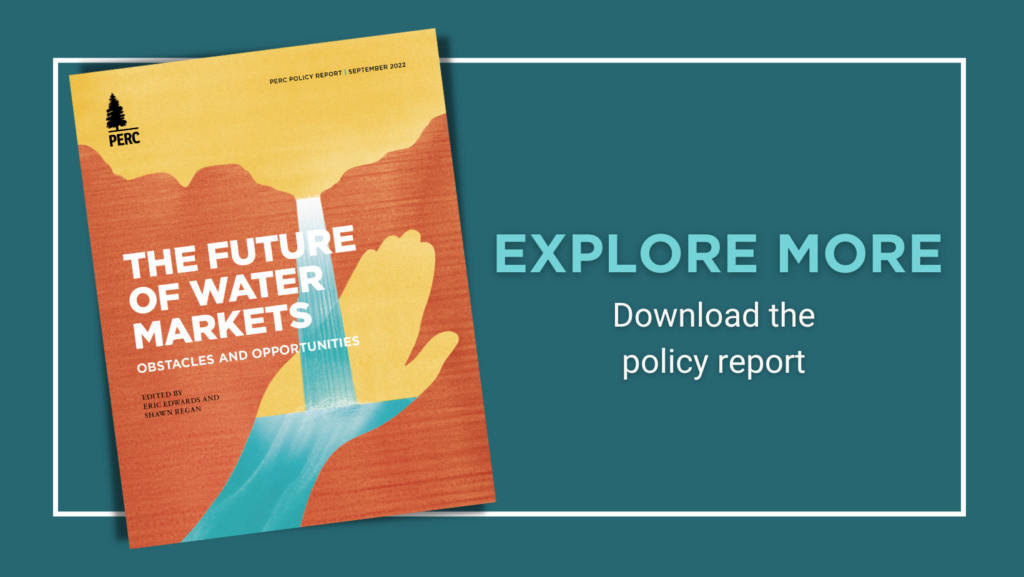This policy brief is part of a volume entitled “The Future of Water Markets: Obstacles and Opportunities,” published by PERC, which addresses timely water policy issues and offers ideas to enhance the future of water markets.
Utah’s Great Salt Lake is a treasured resource, yet dedicated flows have not been established to preserve the economic, ecological, and cultural values that the lake provides. Utah’s prior appropriation law allocates water rights based on time of first use, meaning agricultural water uses typically have senior rights. Utah’s Water Banking Act, which was adopted in 2020, presents an opportunity to reallocate some water to the environment within existing appropriative rights water law.
Under the act, water users can create local water banks to temporarily lease water. Leased water can be used for various purposes, including environmental or agricultural uses. Water banking under the act allows right holders to lease some or all of their water and, crucially, protects banked water rights from forfeiture. Additionally, the water and money from leases remain in the local watershed. Water banking presents an opportunity to flexibly manage water and help preserve the dwindling Great Salt Lake. This analysis estimates the volume of water that could be delivered to Great Salt Lake and the lake’s water level based on wet-year water banking in Utah’s Cache Valley.
Highlights
- Water banking allows water right holders to lease some or all of their water for environmental, agricultural, or other purposes. Banked water rights are protected from forfeiture, and the water and money from leases remain in the local watershed.
- Banking could help flexibly manage water and contribute water to Great Salt Lake, which is drying.
- Water banking could be a cost-effective strategy that would entail financing millions of dollars today to potentially save billions of dollars in future lake restoration, dust abatement, and human health costs.
READ THE FULL POLICY BRIEF





